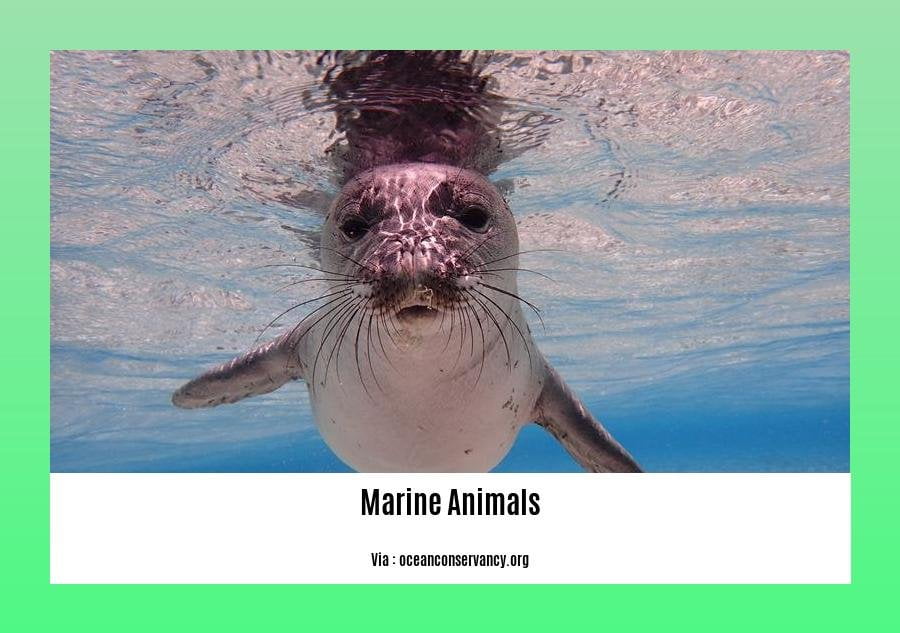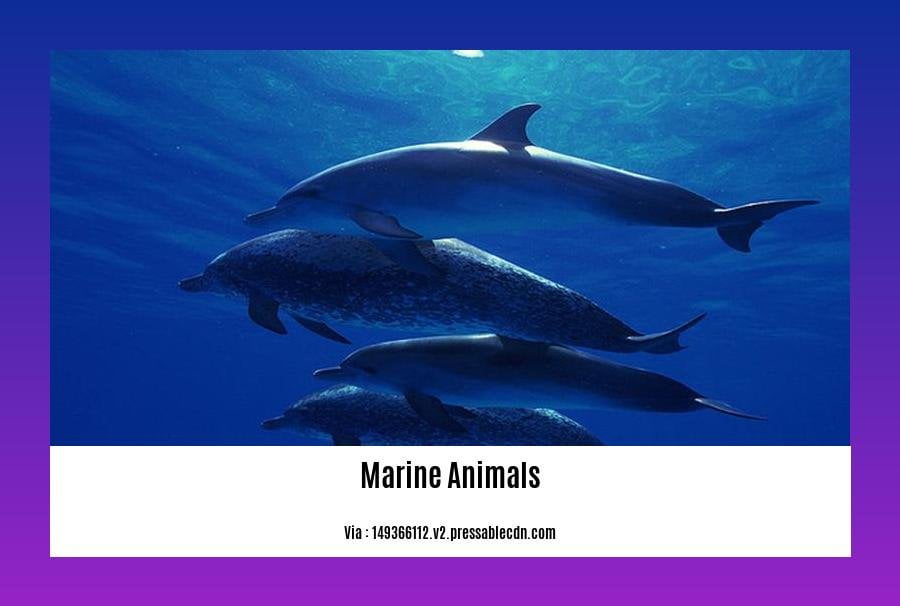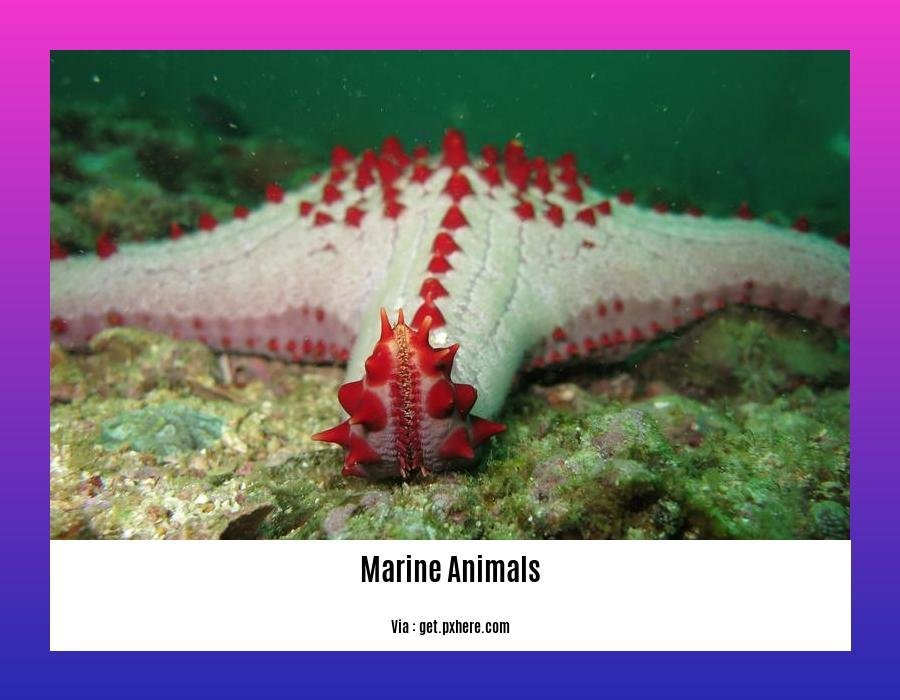Welcome to “Fascinating Facts About Marine Animals: Uncovering the Wonders of Life Underwater,” where we dive deep into the captivating world of marine creatures. Prepare to be amazed as we explore the incredible and often mind-boggling facts about these fascinating animals that call the ocean their home. From the majestic humpback whales to the tiny yet resilient seahorses, join us on this journey to unlock the secrets and mysteries of life beneath the waves.
Key Takeaways:
- Marine animals include a wide range of organisms, from microscopic creatures to giant animals.
- Sea cucumbers play a vital role in filtering and processing organic matter in the ocean.
- Stonefish are one of the most dangerous sea animals due to their venomous spines.
- Dolphins have been observed intentionally consuming pufferfish to get intoxicated.
- Male seahorses take on the role of carrying and giving birth to their young.
- Coral reefs support a quarter of the world’s marine species and are crucial ecosystems.
- A small percentage of bony fish are hermaphrodites, possessing both male and female reproductive organs.
- Mudskippers are unique fish adapted to both land and water environments.
- Sharks have impressive stamina and have existed in the oceans for millions of years.
- Jellyfish have thrived in the oceans for over 650 million years, predating dinosaurs and sharks.
- Electric eels can generate electricity sufficient to light up to 10 electric bulbs.
These facts showcase the incredible diversity, adaptations, and behaviors of marine animals.
Fascinating Facts About Marine Animals

Ocean animals, also known as marine life or sea life, are a diverse group of organisms that inhabit the world’s oceans. From tiny creatures to massive creatures, marine animals captivate us with their unique adaptations and behaviors. In this article, we uncover some intriguing facts about marine animals that highlight the wonders of life underwater.
1. Sea Cucumbers: Nature’s Vacuum Cleaners
Imagine having a miniature vacuum cleaner in the ocean. Well, that’s exactly what sea cucumbers are! These fascinating creatures play a crucial role in maintaining the ocean’s health by filtering and processing organic matter. Acting as nature’s cleaners, they help to recycle nutrients and maintain the balance of the aquatic ecosystem[^2^]. It’s incredible how something so small can have such a big impact!
2. Stonefish: The Stealthy Assassins
In the underwater world, stonefish are the masters of stealth. These venomous creatures, often found camouflaged among rocks and coral reefs, possess spines that deliver a potent and painful venom. Considered one of the most dangerous sea animals, stepping on a stonefish can lead to excruciating pain and potentially fatal consequences[^2^]. So, watch your step!
3. Dolphins: The Adventurous Individuals
Dolphins, known for their intelligence and playful nature, continue to amaze us with their behaviors. Researchers have observed dolphins intentionally consuming pufferfish, which release toxins that cause a state of intoxication for the dolphins. It seems like dolphins enjoy getting high on these peculiar substances, challenging our understanding of animal behavior[^2^]. Who would have thought dolphins had a wild side?
4. Seahorses: Rewriting Gender Norms
Seahorses are famous for their unique reproductive habits. Unlike most animals, it’s the male seahorses that take on the role of pregnancy and give birth to their young. These doting fathers carry the eggs in a specialized pouch until they hatch, demonstrating a remarkable reversal of traditional gender roles. Seahorses truly redefine what it means to be a dedicated parent in the underwater realm[^2^].
5. Coral Reefs: Biodiversity Hotspots
Coral reefs are among the most vibrant and diverse ecosystems on the planet, housing approximately one-fourth of the world’s marine species. These stunning underwater structures provide a safe haven for countless organisms, from colorful fish to intricate invertebrates. A single coral reef can support an astonishing array of life, highlighting the importance of protecting and preserving these fragile habitats[^2^].
6. Hermaphrodites: The Dual Reproductive Power
In the underwater world, some fish possess a remarkable reproductive characteristic known as hermaphroditism. Approximately 2% of all bony fish have both male and female reproductive organs, allowing them to change genders as needed. This unique adaptation enables them to maximize their reproductive potential in different social and ecological contexts[^2^]. Talk about having the best of both worlds!
7. Mudskippers: The Aquatic Adventurers
Meet the mudskippers, the daring fish that can survive in both land and water. These unique creatures have adapted to life in coastal environments where they can be found darting across mudflats and hopping along the shoreline. Their ability to breathe air and move on land sets them apart from most fish, showcasing the incredible diversity of marine life[^2^]. It’s like witnessing a fish on a land expedition!
8. Sharks: Ancient Ocean Warriors
When we think of marine animals, sharks often come to mind. These magnificent creatures have roamed the Earth’s oceans for millions of years, making them efficient and fearsome predators. With their sleek bodies and powerful swimming abilities, sharks are known for their remarkable stamina and endurance. They truly embody the spirit of ancient ocean warriors that have stood the test of time[^2^].
9. Jellyfish: The Earth’s Oldest Survivors
Did you know that jellyfish have been thriving in the oceans for over 650 million years? These mesmerizing creatures predate the existence of dinosaurs and even sharks! Their gelatinous bodies and graceful movements have allowed them to adapt and survive through countless changes in the Earth’s history. Jellyfish truly hold the title of Earth’s oldest survivors[^3^].
10. Electric Eels: Shocking Powerhouses
Electric eels possess an astonishing ability to generate electricity. These amazing creatures can produce a sufficient amount of electricity to light up to 10 electric bulbs simultaneously. It’s like having a living power station in the underwater realm! This unique adaptation helps electric eels navigate their environment, locate prey, and defend themselves against potential threats[^3^]. They truly are shocking powerhouses!
In conclusion, the world of marine animals is filled with fascinating facts that continually astound and inspire us. From the extraordinary abilities of sea cucumbers and electric eels to the unconventional parenting habits of seahorses, marine animals present a captivating tapestry of life underwater. These facts remind us of the incredible diversity that exists in our oceans and the urgent need to protect and conserve this precious ecosystem.
Sources:
- Ocean Animal Facts for Kids. factsjustforkids.com
- The Maritime Post. themaritimepost.com
If you’re curious about fascinating facts about house cats, click here to uncover the secrets of these enigmatic creatures.
Discover the wonders of marine life by exploring intriguing facts about marine life. Prepare to be amazed by the diversity and beauty that lies beneath the ocean’s surface.
Embark on an underwater adventure and delve into the captivating world of ocean animals. Click here to discover intriguing facts about these mesmerizing creatures and their incredible abilities.
Unique Behavior and Communication Methods: Unlocking the Secrets of Marine Life’s Underwater Symphony

Underwater communication is a captivating phenomenon that unveils the hidden connections among marine creatures in ways we can hardly fathom. In the depths of the ocean, an extraordinary symphony of sounds forms the backbone of their communication methods[^1^]. While the basics of communication are similar to those of land-dwelling animals, the marine environment poses unique challenges and adaptations[^2^].
Acoustic Signaling: The Language of the Sea
Visibility is often limited in the ocean, making acoustic signaling vital for marine communication[^3^]. Unlike sound in air, underwater sounds can travel long distances, allowing marine animals to effectively communicate with each other. This unique method of communication serves various purposes, including social recognition, attracting mates, and navigate through territories or resolve mating disputes[^1^].
Recent breakthroughs in research have illuminated the previously unknown communication abilities of sea creatures. It turns out that many species can communicate using an array of sounds and signals, dispelling the long-held notion that they were silent inhabitants of the deep sea[^4^]. One noteworthy study led by researcher Gabriel Jorgewich-Cohen employed microphones to record the communication of 53 sea creatures, such as turtles, revealing their desire to mate or hatch from eggs[^4^].
Unraveling the Sea’s Hidden Language
These discoveries shed light on the importance of listening to and comprehending marine creatures. They also raise intriguing questions about the communication methods of other underwater species that may still elude our understanding. By studying and decoding the intricate underwater communication network, we gain invaluable insights into the behavior and social dynamics of marine life.
Understanding underwater communication is crucial for the conservation of marine ecosystems and the overall health of these environments. Recognizing the unique communication methods of different species empowers us to protect and preserve their habitats, ensuring their long-term survival.
To delve further into the world of underwater communication among marine mammals and sea creatures, here are some recommended sources to explore:
- Seafood Peddler: “The Hidden Art of Underwater Communication: Secrets of Marine Life.” [^1^]
- ResearchGate: “Communication in Marine Mammals” [^2^]
By immersing ourselves in the hidden world of underwater communication, we can develop a profound appreciation for the complexity and interconnectivity of marine life.
Key Takeaways:
- Underwater communication relies heavily on acoustic signaling due to limited visibility in the marine environment.
- Many marine species have been found to communicate using various sounds and signals, dispelling the belief that they were silent.
- Studying and decoding underwater communication provides valuable insights into the behavior and social dynamics of marine life.
- Understanding underwater communication is crucial for the conservation and preservation of marine ecosystems.
Sources:
[^1^]: Seafood Peddler: The Hidden Art of Underwater Communication: Secrets of Marine Life. Link
[^2^]: ResearchGate: Communication in Marine Mammals. Link
By exploring the depths of underwater communication, we unlock the wonders of marine life and gain a new perspective on the marvels of the ocean.
Importance of Marine Animals for Ecosystems
Marine animals play a vital role in the biosphere, contributing to its biodiversity, maintaining the food chain, and participating in nutrient cycling. Their adaptation to different habitats showcases the incredible diversity of species found within marine ecosystems.
Biodiversity:
Marine animals are known for their incredible diversity, with numerous species residing in different habitats. This diversity is crucial for maintaining a healthy and balanced ecosystem, as each species contributes to the overall stability and resilience of the biosphere.
Food Chain:
Marine animals act as both predators and prey in the food chain, playing a vital role in maintaining the balance and energy flow within aquatic ecosystems. They serve as a source of food for higher-level predators while also helping control the population of smaller organisms, creating a harmonious equilibrium.
Nutrient Cycling:
Certain marine animals, especially those lower on the food chain, play a crucial role in nutrient cycling. By consuming and decomposing organic matter, they release essential nutrients back into the environment, sustaining the growth of phytoplankton and other primary producers.
Marine animals adapt to different habitats through various mechanisms, including physical adaptations, behavioral changes, and physiological adjustments. These adaptations allow them to thrive in extreme conditions such as deep-sea environments or polar regions.
Recognizing the importance of marine animals not only helps protect their habitats but also ensures the overall health and balance of the biosphere.
Key Takeaways:
- Marine animals contribute to the biodiversity of marine ecosystems, maintaining their stability and resilience.
- They play a vital role in the food chain, acting as both predators and prey, and helping maintain a balanced equilibrium.
- Certain marine animals contribute to nutrient cycling by consuming and decomposing organic matter, sustaining the growth of primary producers.
- The ability of marine animals to adapt to different habitats showcases the incredible diversity of species in marine ecosystems.
Sources:
– Radix Marine – Life at Sea: Marine Animals’ Role in the Biosphere
– Marine Conservation Ecology Lab – Ecological Roles and Importance of Marine Mammals in Aquatic Ecosystems
Threats to Marine Animals and Conservation Efforts
Marine animals are facing numerous threats that endanger their existence and disrupt marine ecosystems. These threats include overfishing, pollution, climate change, habitat loss, ocean noise pollution, ship strikes, and entanglement in fishing gear. These human-caused threats have had a significant impact on marine animal populations, leading to the endangerment of species such as sea turtles, sharks, and marine mammals.
Conservation efforts and legislation play a crucial role in protecting these endangered marine species and their habitats. To prevent overfishing and promote sustainable fishing practices, measures must be implemented to reduce fishing pressure. Mitigating pollution and addressing climate change are also necessary to ensure the well-being of marine animals and their ecosystems.
To safeguard marine animals and critical ocean habitats, individuals can take certain actions. These include promoting awareness about the challenges faced by marine animals, supporting conservation organizations, reducing single-use plastics, participating in beach clean-ups, and promoting sustainable seafood consumption. These simple but effective actions can contribute to building a healthier future for marine animals and the ocean as a whole.
The conservation of marine animals holds significant benefits as they play a crucial role in the marine ecosystem. Marine mammals, for instance, are essential for maintaining the balance in the food web and ensuring the overall stability of ocean ecosystems. By protecting marine animals, we are safeguarding the biodiversity, resilience, and health of the planet’s oceans.
Key Takeaways:
- Overfishing, pollution, climate change, habitat loss, ocean noise pollution, ship strikes, and entanglement in fishing gear are major threats to marine animals.
- Conservation efforts and legislation are essential to protect endangered marine species and their habitats.
- Individuals can take actions like promoting awareness, supporting conservation organizations, reducing plastic use, participating in beach clean-ups, and consuming sustainable seafood to protect marine animals.
- Protecting marine animals is crucial for maintaining the balance and health of the marine ecosystem.
Sources:
- American Oceans. “The Most Endangered Marine Species.” Learn More
- IFAW. “15 ways you can help protect the ocean and marine animals.” Learn More
FAQ
Q1: What are some interesting facts about marine animals?
A1: Some interesting facts about marine animals include their role as vacuum cleaners in the ocean, the venomous spines of stonefish, dolphins that enjoy getting high by consuming pufferfish toxins, male seahorses giving birth, the importance of coral reefs for marine species, and the ability of electric eels to generate electricity for lighting up to 10 bulbs.
Q2: How long have jellyfish been thriving in the oceans?
A2: Jellyfish have been thriving in the oceans for over 650 million years, predating both dinosaurs and sharks.
Q3: What is the role of sea cucumbers in the ocean?
A3: Sea cucumbers serve as the ocean’s vacuum cleaners, playing a crucial role in filtering and processing organic matter.
Q4: What unique abilities do mudskippers have?
A4: Mudskippers are unique fish that are highly adapted to land and can survive in both terrestrial and aquatic environments.
Q5: Why are sharks known for their stamina and endurance?
A5: Sharks have been swimming the Earth’s oceans for millions of years and are known for their remarkable stamina and endurance.














